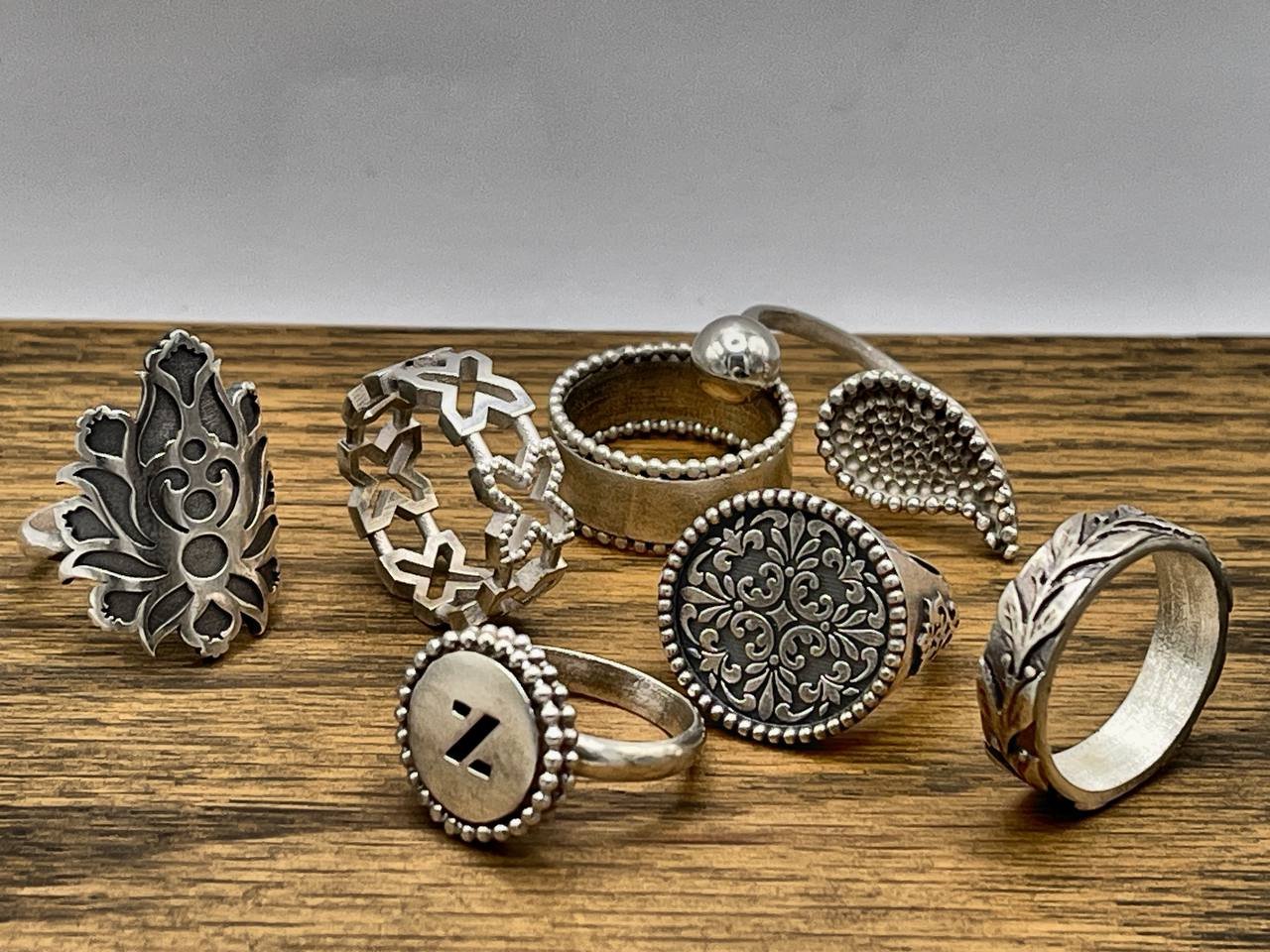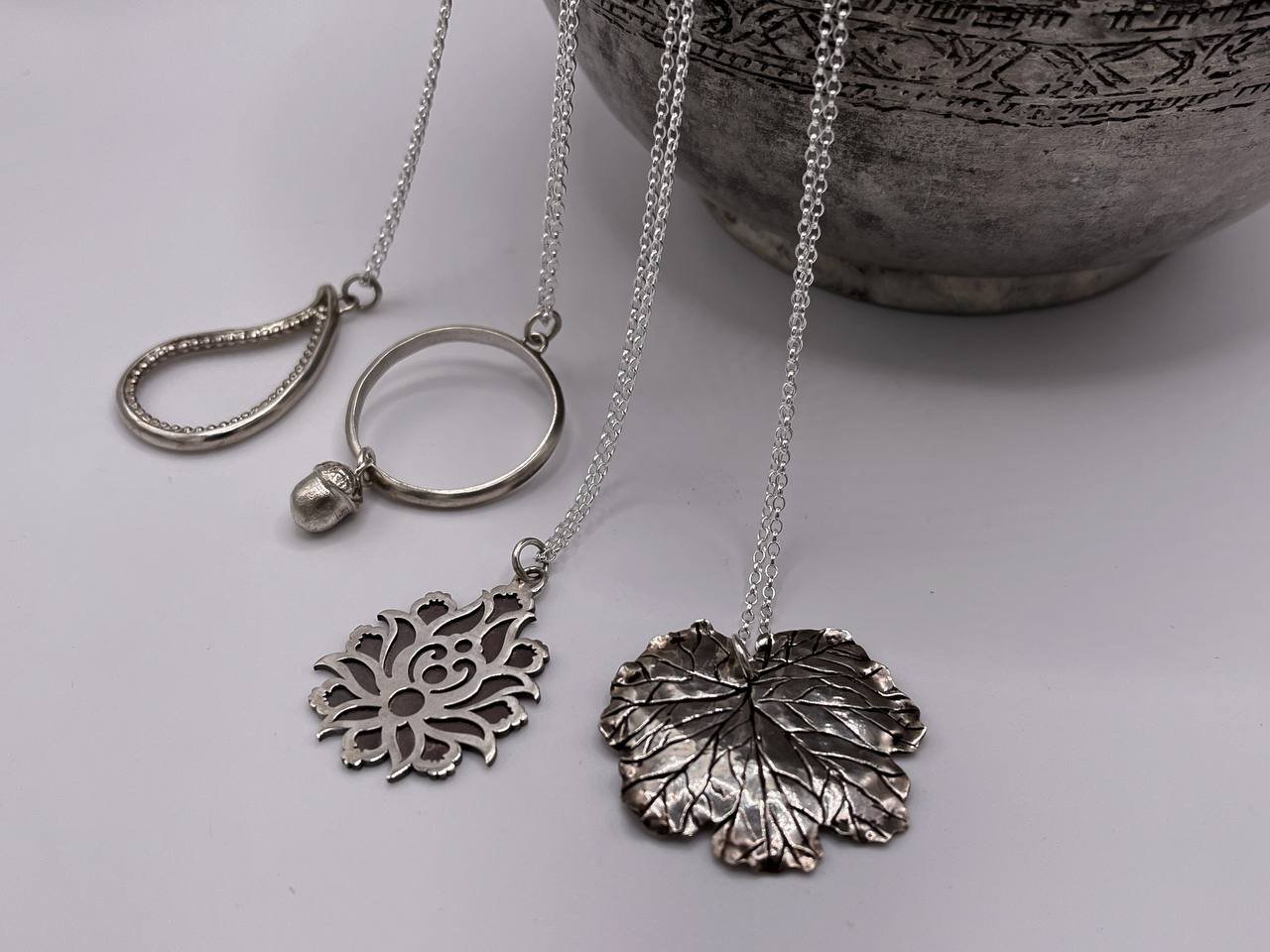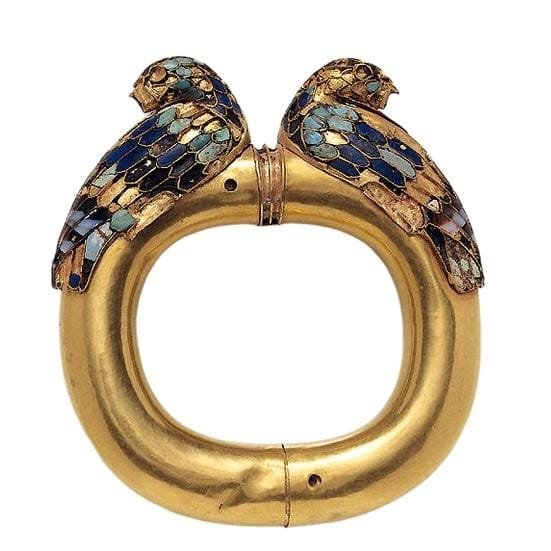The Origins of Jewellery: Early Human Adornments
Jewellery first appeared in human history during the prehistoric period, marking the earliest stages in the evolution of jewellery. Early humans created simple adornments from natural materials such as shells, bones, stones, and animal teeth. These primitive forms of jewellery were often worn as amulets, believed to offer protection, attract good fortune, or signify affiliation with a group. Archaeological evidence suggests that humans wore jewellery as early as 100,000 years ago, with discoveries of shell beads in Africa, representing some of the earliest forms of personal decoration.
- Materials and Techniques of Early Jewellery
In the earliest periods, jewellery-making techniques were rudimentary, stringing natural elements together or shaping them with basic tools. Early artisans often used what they could find in their environment, shaping materials into pendants, necklaces, and bracelets. Over time, as human societies evolved, so did the ability to craft more sophisticated forms of jewellery, marking key points in the evolution of jewellery by introducing metals such as gold, copper, and silver into designs.
Jewellery in Ancient Civilisations: Symbolism and Status
As civilisations advanced, the evolution of jewellery expanded beyond personal adornment to reflect social, religious, and political status. In ancient Egypt, Mesopotamia, and Greece, jewellery became a symbol of wealth and power, often used to display one’s rank in society.
- Egyptian Jewellery: A Spiritual and Royal Symbol
The Egyptians were particularly renowned for their jewellery-making skills, which greatly influenced the evolution of jewellery. Gold, which was abundant in Egypt, became a key material, and its lustrous qualities were associated with the gods. Pharaohs and nobles wore intricate jewellery inlaid with gemstones like lapis lazuli, turquoise, and carnelian. Egyptian jewellery was often designed with symbolic meanings; for example, the ankh and scarab were common motifs representing life and resurrection, marking significant stages in the evolution of jewellery as a tool for spiritual and royal significance.
- Mesopotamian and Greek Influence
In Mesopotamia, jewellery often served religious purposes, with amulets designed to offer protection from evil spirits. The Greeks, on the other hand, valued jewellery not only for its beauty but also as an indication of social rank. During the Hellenistic period, advances in metalworking allowed for more detailed and realistic depictions in jewellery, often featuring images of gods, animals, and mythological figures. These changes further contributed to the ongoing evolution of jewellery across different cultures.
- Early Persian Civilisations
The history of Persian jewellery dates back to around 3000 BCE, during the Elamite civilisation, one of the earliest societies in the region. Early Persian jewellery was relatively simple, made from materials like copper, bronze, and beads, indicating the initial stages of jewellery evolution in Persia. Archaeological finds from this era, such as bracelets, necklaces, and rings, were often adorned with semi-precious stones like agate and carnelian, which were believed to have protective properties.
As Persia’s trade routes expanded, artisans began incorporating more diverse materials and techniques into their jewellery, setting the stage for the intricate designs that would follow in later periods.
The Middle Ages and Renaissance: Jewellery as a Status Symbol
In medieval Europe, jewellery was tightly linked to status and religion, reflecting another chapter in the evolution of jewellery. During the Middle Ages, jewellery became more ornate, with the elite using it to convey their power and wealth. Religious motifs dominated, and jewellery was often used to show one’s devotion to the Church. Crown jewels, ornate rings, and brooches embedded with gemstones such as sapphires and rubies were prevalent.
- Renaissance: A Period of Opulence
The Renaissance brought a renewed interest in art, culture, and luxury, sparking a significant phase in the evolution of jewellery. Jewellery designs became even more extravagant, reflecting the opulence of the period. Royals and nobles commissioned elaborate pieces encrusted with diamonds, emeralds, and other precious gems. This era also saw the rise of portrait jewellery, where miniature portraits of loved ones were encased in lockets or brooches, adding to the rich evolution of jewellery during this period.
Modern Jewellery: A Blend of Tradition and Innovation
The Industrial Revolution marked a turning point in the evolution of jewellery design and production. Advances in technology made jewellery more accessible to the middle class, no longer the exclusive domain of the aristocracy. With the rise of mass production, jewellery became available in a wider variety of styles and price points. The 20th century saw the emergence of iconic jewellery brands such as Cartier and Tiffany & Co., which redefined luxury jewellery with their innovative designs, contributing to the modern evolution of jewellery.
- The Art Deco and Minimalist Movements
The Art Deco movement of the 1920s introduced bold, geometric jewellery designs, often incorporating diamonds, platinum, and coloured gemstones. In contrast, the mid-20th century saw the rise of minimalist jewellery, which emphasised clean lines and understated elegance. Both styles remain influential in modern jewellery design and reflect the dynamic evolution of jewellery in the modern era.
Jewellery as Personal Expression and Cultural Identity
In contemporary society, jewellery continues to be a means of personal expression, allowing individuals to convey their identity, style, and values, which highlights the personal aspect of the evolution of jewellery. It plays a role in key life events such as engagements, weddings, and religious ceremonies. Additionally, jewellery has become a tool for social activism, with many designers creating pieces that reflect ethical and environmental concerns, such as sustainable or fair-trade jewellery, representing a more conscious chapter in the evolution of jewellery.
- Cultural and Ethical Considerations
In many cultures, jewellery holds deep symbolic meanings. For example, in India, gold jewellery is often worn during weddings and religious ceremonies as a sign of prosperity and good fortune. Meanwhile, the global jewellery industry has faced scrutiny over issues like conflict diamonds and unethical labour practices, leading to a growing demand for ethically sourced and environmentally friendly jewellery. These factors play an important role in the ongoing evolution of jewellery in modern times.
The evolution of jewellery has seen it transform from simple natural adornments to elaborate and symbolic pieces that reflect societal values, personal identity, and cultural traditions. Today, it serves as a versatile art form, symbolising everything from love and commitment to wealth and status. As it continues to adapt to modern trends and ethical standards, the evolution of jewellery remains an integral part of human life, reflecting our shared history and ever-changing expressions of beauty and meaning.






